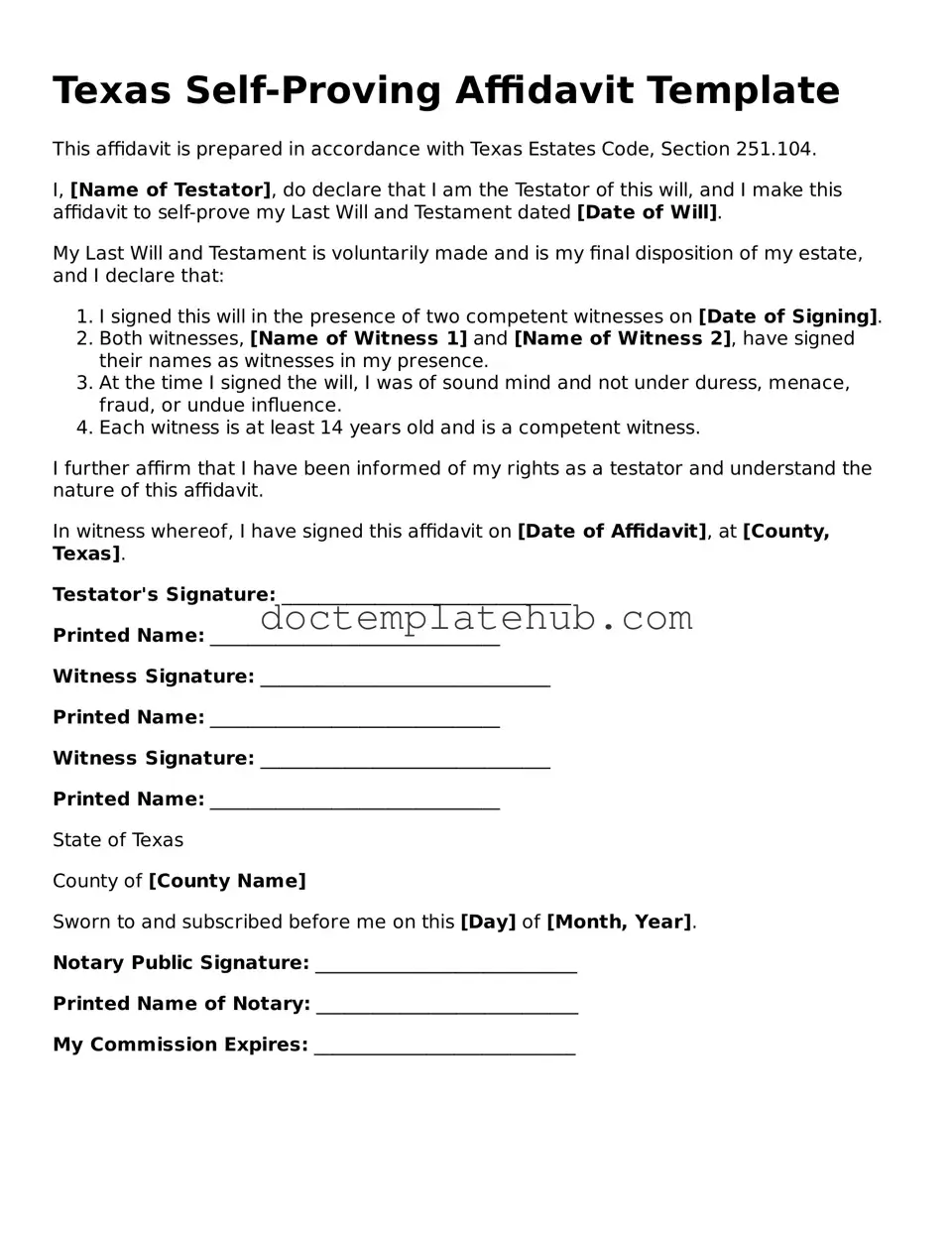What is a Texas Self-Proving Affidavit?
A Texas Self-Proving Affidavit is a legal document that allows a testator's will to be validated without the need for witnesses to testify in court. This affidavit is typically executed at the same time as the will and serves to simplify the probate process by confirming the authenticity of the will and the testator's signature.
Who can create a Self-Proving Affidavit in Texas?
Any individual who is at least 18 years old and of sound mind can create a Self-Proving Affidavit. This includes the testator, who is the person making the will, as well as witnesses who are present at the signing of the will. It is important that the witnesses are not beneficiaries of the will to avoid any potential conflicts of interest.
What information is included in a Self-Proving Affidavit?
A Self-Proving Affidavit typically includes the names and addresses of the testator and witnesses, a statement affirming that the testator signed the will voluntarily, and an acknowledgment that the witnesses observed the signing. Additionally, the affidavit may include a declaration that the testator was of sound mind at the time of signing.
Is a Self-Proving Affidavit required in Texas?
No, a Self-Proving Affidavit is not required in Texas. However, including one can greatly expedite the probate process. Without this affidavit, witnesses may need to be called to testify about the will’s validity, which can lead to delays and complications.
How is a Self-Proving Affidavit executed?
The execution of a Self-Proving Affidavit requires the testator and witnesses to sign the affidavit in the presence of a notary public. The notary will then acknowledge the signatures, making the affidavit a legally binding document. It is advisable to complete this process simultaneously with the signing of the will.
Can a Self-Proving Affidavit be revoked or amended?
A Self-Proving Affidavit can be revoked or amended, but this must be done in accordance with Texas law. If the will is revoked, the Self-Proving Affidavit is also considered revoked. Any amendments to the will should also include a new Self-Proving Affidavit to maintain the same level of validity during probate.
Where should a Self-Proving Affidavit be kept?
The Self-Proving Affidavit should be kept with the will in a safe and accessible location. It is crucial that the executor or personal representative knows where to find these documents when the time comes to initiate the probate process. Proper storage helps ensure that the will can be validated smoothly.
What happens if a Self-Proving Affidavit is not included with a will?
If a Self-Proving Affidavit is not included with a will, the probate process may become more complicated. The court may require witnesses to testify about the will’s validity, which can lead to delays. Additionally, if witnesses are unavailable or unwilling to testify, it may result in legal disputes or challenges to the will.
